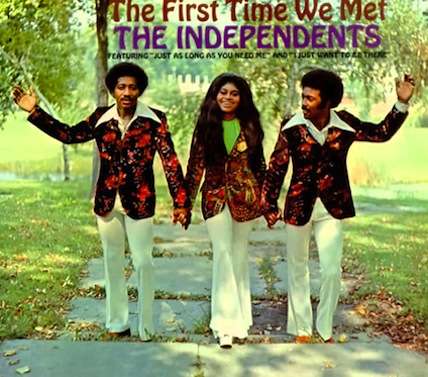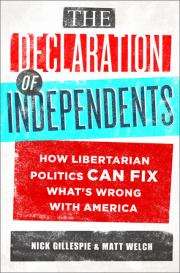No, Independents Aren't Just a Bunch of 'Closet Partisans'
A new paper throws cold water on a poli-sci cliché.


The conventional wisdom in political science right now is that "true" independents are rare. Many people may call themselves independents, the argument goes, but almost all of them are really "closet partisans" who are effectively attached to one party or the other; they just prefer, for whatever psychological reason, to think of themselves as nonaligned.
A new paper by the Stanford political scientist Morris Fiorina pushes back against that narrative. Among his points:
• It is true that most independents tend to prefer one party and to vote with it. But that does not mean the same independents always prefer the same party. When they are surveyed over time, a significant number of independents switch back and forth when asked which party they like better, depending on who they plan to vote for in that particular election. The partisan preference follows the vote rather than the other way around.
• In addition to asking independents whether they lean toward a particular party, pollsters ask the members of those parties how strong their partisan loyalty is. Republican-leaning independents and weak Republicans do tend to vote alike, and Democratic-leaning independents and weak Democrats tend to vote alike too. But there are some notable places where they veer apart. For example: When Barry Goldwater ran a more purely conservative presidential campaign in 1964, Fiorina writes, "weak Republicans abandoned Barry Goldwater in droves, but independent leaning Republicans registered support almost 20 percentage points higher." Similarly, when George McGovern ran to the left of most Democratic nominees in 1972, he "did not win even a majority of weak Democrats, but 60 percent of independent leaning Democrats supported him."
To explain this, Fiorina suggests that "independent Republicans voted more heavily for Goldwater not because they were closet Republicans; rather, they were independents who felt closer to the Republicans in that election." Ditto for the Democrats: By changing their ideological offerings, the party picked up support from people who ordinarily felt homeless (and lost it from people who ordinarily saw the party as a home).

• Independents are also more likely than weak partisans to vote for third-party candidates. George Wallace, John Anderson, Ross Perot, Ralph Nader, and Pat Buchanan all did much better among independents than among weakly attached members of the major parties.
Needless to say, those five men didn't all draw from the same independents. As Fiorina argues, "independents are a heterogenous category. Some are closet partisans. Some are ideological centrists. Some are cross-pressured, preferring one party on some issues but a different party on other issues. Some are unhappy with both parties but one more than the other, and some are, quite simply, clueless." But they cannot, as a group, be reduced to one big lump of partisans in denial.
Why does that matter? Because that familiar two-colored map of America, where everywhere is either red or blue, just doesn't represent the range of opinion in this country. "The vote is a binary choice, a blunt and often inaccurate way to express one's preferences on the issues," Fiorina reminds us. "A given voter might repeatedly make the same decision in the voting booth even while disagreeing substantially with the party for whom she votes—so long as she disagrees even more substantially with the other party. Many voters face just such a situation in 2016 when they must choose between the two most negatively viewed candidates in modern times."
"Must choose" is a stretch, as Gary Johnson, Jill Stein, Evan McMullin, and our good friend Mr. Just Stay Home could tell you. But you know what the man means.
Bonus link: "In the Age of Trump, Republicans Are In for a Reckoning—Or a Realignment."

Show Comments (41)